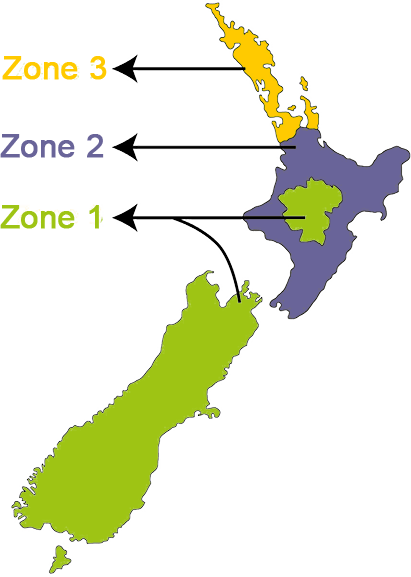
Growing Guide
Like other ferns, silver fern loves moist, organic conditions. A loose, humus-rich soil generously enhanced with organic matter is ideal. Canterbury Nature recommends fertilizing the soil with materials such as well-rotted manure, fishmeal, seaweed or bonemeal. Using fertilizers rich in nitrogen will promote healthy frond growth, while high phosphate fertilizers will help the fern produce more spores for propagation. Soil should be kept moist, even wet, at all times during the growing season. The silver fern (Cyathea dealbata) is a remarkable species of tree fern that displays a narrow brown trunk and elegant green leaves with shimmering silver undersides. The silver fern is endemic to New Zealand, occurring naturally nowhere else in the world. The plant has earned a place of honor as the country's national emblem and is enjoyed where hardy as a striking garden ornamental. Habitat The silver fern can be found growing throughout New Zealand from the North Island down to the west coast of the South Island. It prefers lowland forests, thriving in moist, mild climates.
0
Place spores on surface of soil.
Do not cover with soil.
Best raised in places you can conserve moisture since they love shade and lots of moisture.
Feed your ferns every two to four weeks with a liquid fertiliser during summertime.
Don’t mix full strength because you can damage the root system.
A few tiny drops of fertiliser added to their misting water will do the trick.
Do not feed during the wintertime as this is when ferns rest.
Most ferns like evenly moist soil with regular waterings.
Allowing the soil to dry out between waterings causes stress.
Although you see ferns growing in moist, shady conditions like the forest floor, this doesn’t mean that they can live happily without light.
Their normal conditions in the forest is dappled light.
Fertilize the soil with materials such as well-rotted manure, fishmeal, seaweed or bonemeal.
Using fertilizers rich in nitrogen will promote healthy frond growth, while high phosphate fertilizers will help the fern produce more spores for propagation.
Soil should be kept moist, even wet, at all times during the growing season.
Check the undersides of larger tree ferns - they will form seeds underneath or brown spore nodules which can be collected easily by trimming the leaves.

Zone 1 - Cool
January , February , March , April , May , June , July , August , September , October , November , December
Zone 2 - Temperate
January , February , March , April , May , June , July , August , September , October , November , December
Zone 3 - Subtropical
January , February , March , April , May , June , July , August , September , October , November , December
Pests
Problems